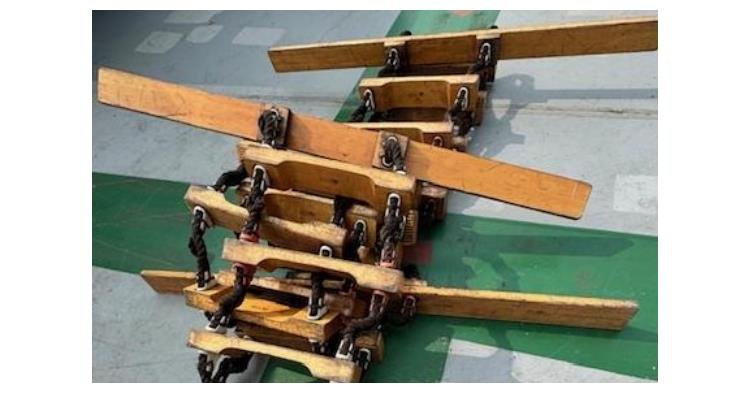Despite the fact that the ladder was only one year old, it was in a deplorable condition. The deck crew had been busy with the ladder for several hours. I could not check if the required repair rope had been used (three-ply tarred Marline of a minimum breaking strength of 800N and with a minimum diameter of 4mm or other suitable material of equivalent strength and diameter as per ISO799-1:2019 rule 4.7). After these repairs, several people boarded and left the vessel again via this ladder. I therefore deemed it safe enough to conduct a pilot change in sheltered waters with the vessel not making way through the water (my bad). Once I was on the pilot ladder to disembark, which I was not able to test with my weight on it before that time, I noticed the steps were still loose.
Port state control has been informed about the situation and has asked the agent to provide new ladders. For your information: I asked a reputable manufacturer for an appraisal on a ladder with a length of 14m and 43 steps and the costs of that will be: 965,- ex. VAT. It is possible to a ladder directly from various manufacturers in the region.
The class of the presented ladder has been asked why this product had been certified by them due to bad seizings and varnish etc. and they are investigating this case.
Should you want to obtain more information regarding pilot ladders, I would like to point out the website www.pilotladdersafety.com to you. It has a lot of information on ladders and also good instructions that can be used in toolbox meetings. My personal Linkedin page can also be used as reference for more information on pilotladders. I am always willing to assist the company in safety on this topic, as I have done for many other companies, pilot-associations and NGO’s.
As we speak, the workgroup I am a part of is finishing the process of writing new and clear regulations on ladders, that will pass the IMO MSC this December. The same goes for the pilotladder poster that has been fully revised and redesigned.
Finally, the vessel has no blame for having a ladder onboard that is not constructed as per international regulations: vessel orders a ladder, a ladder is delivered and the crew should be able to rely on the fact that a proper piece of equipment had been purchased, but unfortunately a substandard quality ladder was delivered. The vessel is however responsible for maintenance to be carried out on the ladder, especially when the ladder is constructed with whippings that will loosen over time. Purchasing a ladder where clamps are used, erases that problem. Equipment like pilot ladders, need to be in the vessel’s SMS system so it is assured that proper maintenance and care will be executed. ISO799 provides you with the correct tools to do so. Also some manufacturers attach a maintenance record booklet to every ladder they supply which is a very good basis to implement it in the SMS system, it will definitely save lives when done the proper way.
I’ll end this article with some questions and remarks that are running through my mind and are of course open for discussion:



